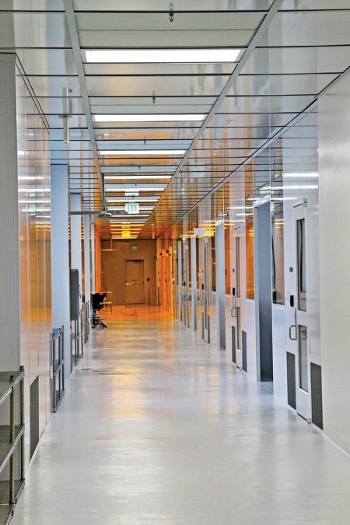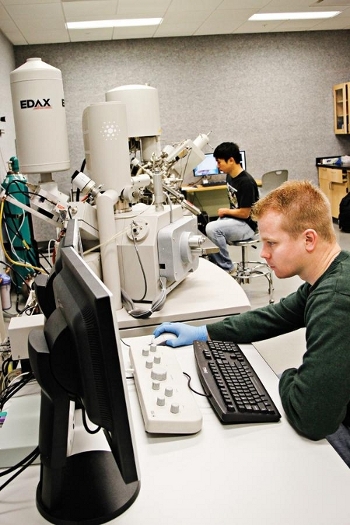Overview

The Utah Nanofab encompasses a class 100/1000/10,000 cleanroom, packaging, and test areas. Commissioned in 2012, the new 18,000 square foot facility provides the specialized custom-built infrastructure, equipment, processes, and expertise necessary for researchers and companies to design, build, and package revolutionary micro and nanoscale devices. Capabilities include device modeling, design layout, mask fabrication, thin film deposition, patterning, and device packaging.
The facility and staff gladly serves researchers and companies from the campus and beyond, including faculty and researchers from regional institutions as well as companies who use the facilities to generate proof-of-concept and data supporting new product ideas.
Visionary ideas and inspired creativity have helped the Utah Nanofab become a world leader in the fabrication of neural prosthetics, biomedical microfluidic systems and biosensor chips. The discoveries made in the Nanofab help create life-saving medical devices, faster microchips, and more efficient energy systems, resulting in many scientific publications and new companies. Visit our history page to learn that our roots go all the way back to the fundamental patent on CMOS microelectronic devices.
The adjacent Micron Technology Foundation Inc. Microscopy Suite is home to the NSF-Sponsored Materials Research Science and Engineering Center (MRSEC) shared facilities and is a partner in the Materials Research Facilities Network (MRFN). This facility includes optical, electron, and ion microscopes, along with specialized analysis techniques to study surface topography, surface chemistry and even optical and dielectric properties of materials.
The ~5,000 square foot microscopy suite is the nexus point in the multidisciplinary facility, being strategically and metaphorically placed as a bridge between the engineering / science campus, and the medical school. Within the building, it is located between the research tower and the cleanroom. The Micron Technology Foundation Inc. Microscopy Suite is where these diverse researchers from all over campus physically bump into each other in a suite of tools designed to serve both hard and soft materials. This is where problem-solving engineers and researchers working on micro-and nano-scale devices meet life scientists who have ideas for quality-of-life-improving applications; but who need engineered solutions. We engineer having these people run into each other, and look for the magic that results!

Research Facility
The Colleges and University VP’s combine physical and human resources to support:
- The Utah Nanofab, including deposition, photolithography (including mask-making), and etch equipment typical of University facilities. Specialized tools include ALD, XeF2 etch, LPCVD (TEOS, LTO, PSG), DRIE, CMP.
- The portfolio of tools supporting nano-scale imaging and surface analysis includes an analytical S/TEM with ultrafast EDS (2d and 3D elemental mapping) and both wet and dry cell in-situ imaging, an imaging XPS/Auger/ISS, XHR dual-beam FIB with Pt, Au deposition, I2, XeF2 and H2O enhanced etch injectors and omniprobe, UHR imaging SEM (cold FEG), analytical hi-res ESEM (FEG) with EBSD and EDX, with AFM, stylus profilometer, ellipsometer, Hysitron nanoindenter, optical interferometer, digital metallurgical microscope, and microspot XRF
- Research Affiliated Labs: a government accounting approved mechanism for accessing “private” tools and instrumentation for a user fee, and channeling those funds back to offset operational, maintenance, and upgrade costs.
- We have developed a system to enable PI’s to obtain “preliminary data” for targeted funding solicitations by using University-sponsorship to pay for several months (as approved) of microfabrication and characterization user fees.
Teaching Facility
Our engineering students have access to the “machine shop of the future,” with design, fabrication, test and assembly facilities to make tiny mechanical machines, implants, lab-on-a-chip sensors, and microfluidic devices that fit on a fingernail. Visit Cool Stuff to learn more about our course offerings and what our students have done.